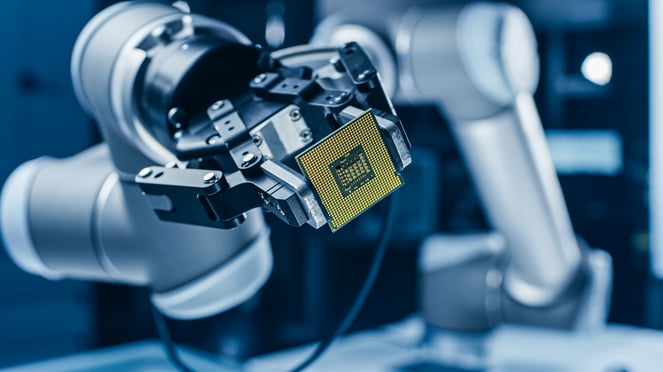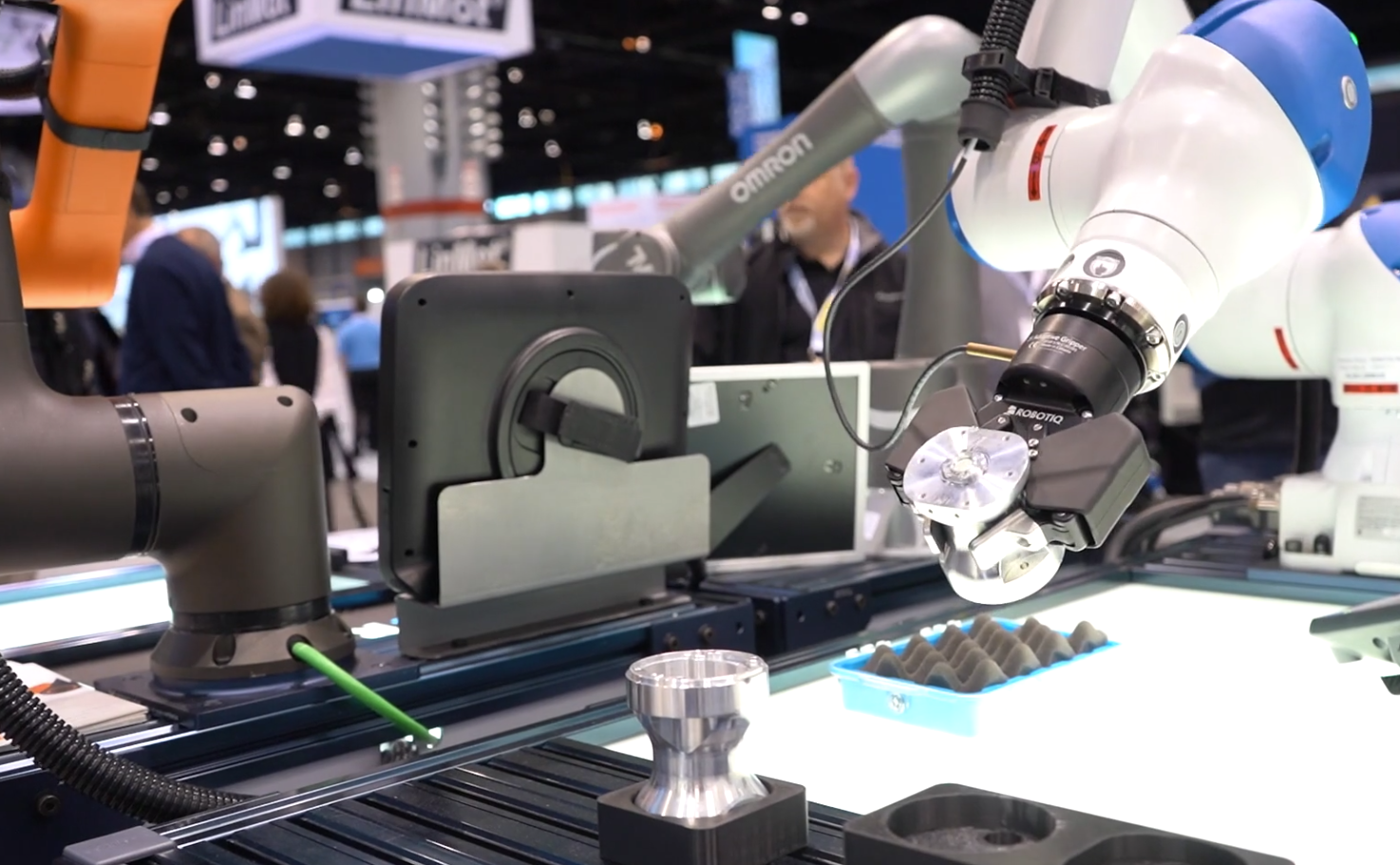10 Robotics Predictions for Trends That Will Dominate 2023

Posted on Dec 20, 2022 9:15 AM. 5 min read time
Robots have come a long way since their early days as big, clunky machines that took up vast spaces in factories.
Today, robots are more versatile and adaptive than ever before. They are quickly becoming an integral part of many business operations.
A lot has changed recently in the business landscape. Supply chain disruption, labor shortages, and increasing geopolitical unrest are causing many businesses to readdress how they operate.
Robots and other forms of automation are becoming a core tool to navigate these challenging situations.
How will things change as 2023 develops? We can't know for sure.
But here are some predictions as to which trends may dominate the robotics industry in 2023…
1. Data-driven automation
We are well into the decade of big data and robotic automation is no different. Automation technology is becoming more data-driven with an increasing emphasis on applying solutions based on real-world data.
According to some analysts, one third of European enterprises, for example, are now prioritizing data-driven automation.
One place you can see data-driven automation in practice is in supply chain logistics, where robots are used to implement decisions based on real-time logistics data.
2. Augmenting human abilities with robots
Robotic technology is also increasingly being applied in conjunction with other technologies. Around 35% of organizations will integrate physical robots with other technology to augment human abilities and counteract labor shortages.
Companies increasingly recognize that robots are not a replacement to human work but a way to enhance what their human workers can already do. With many industries facing worrying skills and labor shortages, robots are becoming a necessary way to fill in the increasing gaps.
3. Cobot use will continue to rise
Collaborative robots have become a significant part of the robotic landscape in the last decade. It's expected that cobots will account for 30% of the total robotics market by 2027.
Cobots are designed to work safely alongside humans and be inherently easy to use. This makes them ideal for companies that have no previous experience with robotics and do not have enough space or resources to accommodate large industrial robots that require additional safety fencing.
This widespread adoption of cobots is bringing automation to many more companies than was previously possible.
4. Autonomous mobile robots are arriving
It also seems that autonomous mobile robots are arriving in more businesses, especially in the logistics sector.
We saw a lot of autonomous mobile robots at this year's Automatica trade fair. The technology, which has been around for years, is finally becoming widespread. Companies are now adopting mobile robots to improve the efficiency of their logistics operations in their warehouses and other industrial settings.
5. Skills shortages may impede automation
We have talked before about how robots can help companies to overcome skills shortages in their industries by taking over the less skilled parts of workers' jobs.
However, there is one skills shortage that robots can't help to solve: the shortage of robotics skills. It's predicated that a lack of robotics skills will slow down the adoption of robotic automation in some companies.
This makes it even more important to pick robotic solutions that almost anyone can deploy, regardless of their experience with robotics.
6. Logistics remains a "sweet spot industry"
The logistics sector experienced an enormous boost in focus during the 2020 global pandemic, coupled with a rise in e-commerce across the world.
Logistics remains a "sweet spot sector" for robotics as it offers many opportunities for automation and its potential for growth in robot usage.
It seems likely that we will see even more growth in logistics-related robotic applications over the coming years. Robotic palletizing remains one of our most popular automation solutions at Robotiq.
7. Electronics assembly automation will grow
Another "sweet spot sector" for robotics is electronics manufacturing, specifically electronic assembly.
Robots can assemble electronic parts more consistently than human workers doing the same job. This can save companies time and money while reducing the errors caused by the manual assembly of products.

Robotic screwdriving is one example of a task that is now easier than ever to perform with a robot. This essential task can help make the entire assembly process faster.
8. Automotive industry has lost its robot lead
For many years, the automotive industry was the leading user of robotic automation. However, it recently lost its lead.
In 2020, the number of robot deployments to automotive tasks was equal to non-automotive deployments. In 2021, non-automotive applications took the lead for the first time.
This shift shows just how widespread robotic automation has become. It marks a transition point to a future with more robots in more industries.
9. More intelligent and adaptive robotics
Robots are also becoming increasingly more intelligent and adaptive.
The newest wave of robots can incorporate real-time information into their operations. They are able to quickly respond to changes in the environment and change their operations.
With the rise in practical artificial intelligence algorithms, we can expect to see more advanced and sophisticated robots in years to come.
10. Easy to use robots are key
With the rise of easy-to-use robotic solutions (such as robotic application kits), the barrier for entry into robotic automation is lowering.
Robots are now much easier for any company to use, not just those companies with robotics expertise.
It seems likely that this trend towards intuitive robots will continue. As well as application kits, we are also seeing many more robots-as-a-service business model, as companies look to reduce the friction associated with deploying robots.
If you haven't used robots in your business yet, now is certainly the time to get started!
Which trend is most applicable to your business? Tell us in the comments below or join the discussion on LinkedIn, Twitter, Facebook, or the DoF professional robotics community.






Leave a comment